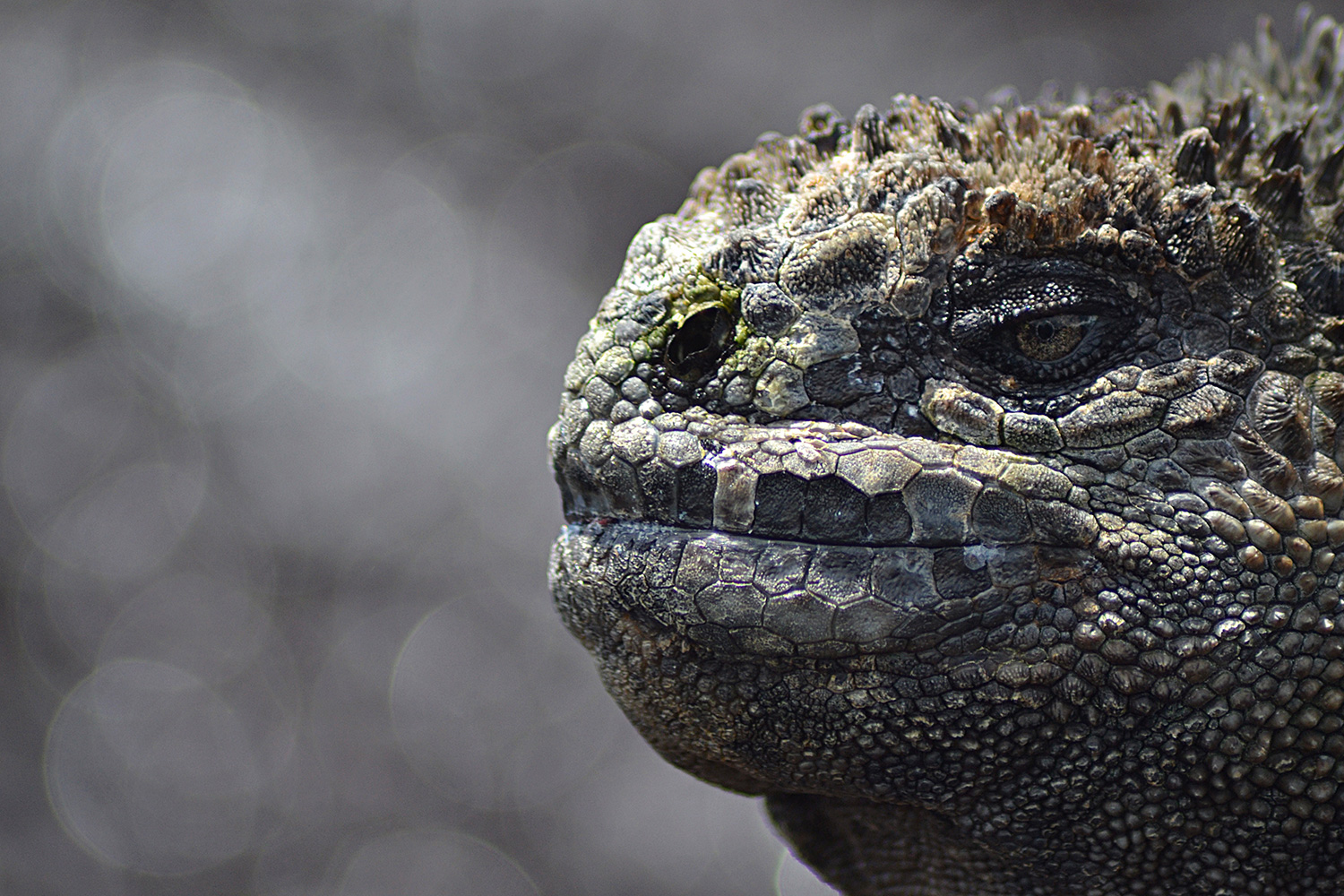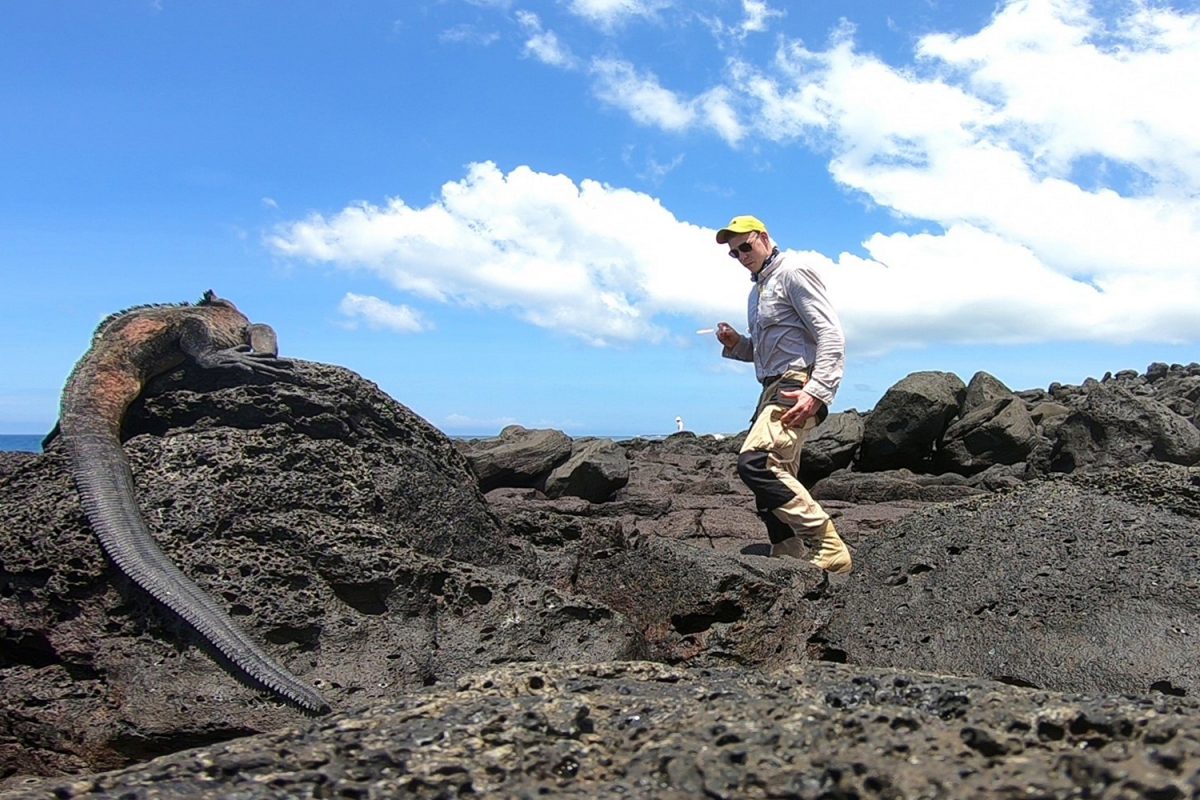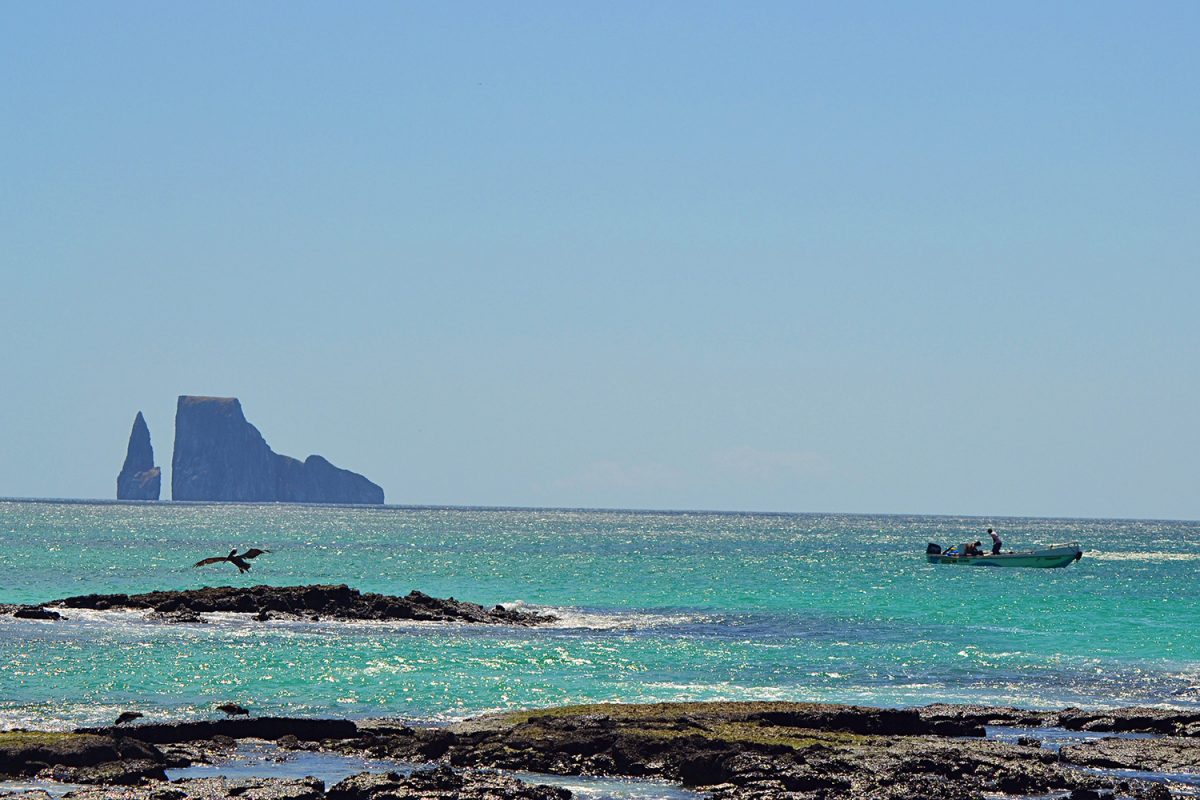Tracking the Meal Plan of Marine Iguanas TU Braunschweig involved in Leipzig research project on the Galápagos Islands
Unlike any other lizard species worldwide, marine iguanas (Amblyrhynchus cristatus) have adapted to the marine environment, including a special diet on marine macroalgae, for which they dive and graze in the subtidal and intertidal zones. How do they do this? How do lizards adapt to climatic fluctuations and new environmental conditions? And how can they be protected better? A research team led by Prof. Dr. Sebastian Steinfartz from the University of Leipzig has been investigating these questions for some time on the Galápagos Islands. Sten Anslan from the Zoological Institute of the Technische Universität Braunschweig is also part of the team.
The marine iguanas live exclusively on the Galápagos Islands. On the island of San Cristóbal, scientists are researching the food ecology and population sizes of these cold-blooded animals. In this project, Sten Anslan leads the part of molecular DNA analyses of the fecal samples to identify the food items of marine iguanas in different locations over the long-term temporal scale. As the differences in foraging preferences may lead to ecological segregation and ultimately speciation, the diet analyses helps to find clues for the observed within-island speciation process.
There are total 11 recognized sub-species of marine iguanas across the archipelago, but the current focus is on the island of San Cristóbal, where previous work of Sebastian Steinfartz and colleagues have identified a unique case of the presence of two sub-species (A. c. mertensi and A. c. godzilla) on one island.



